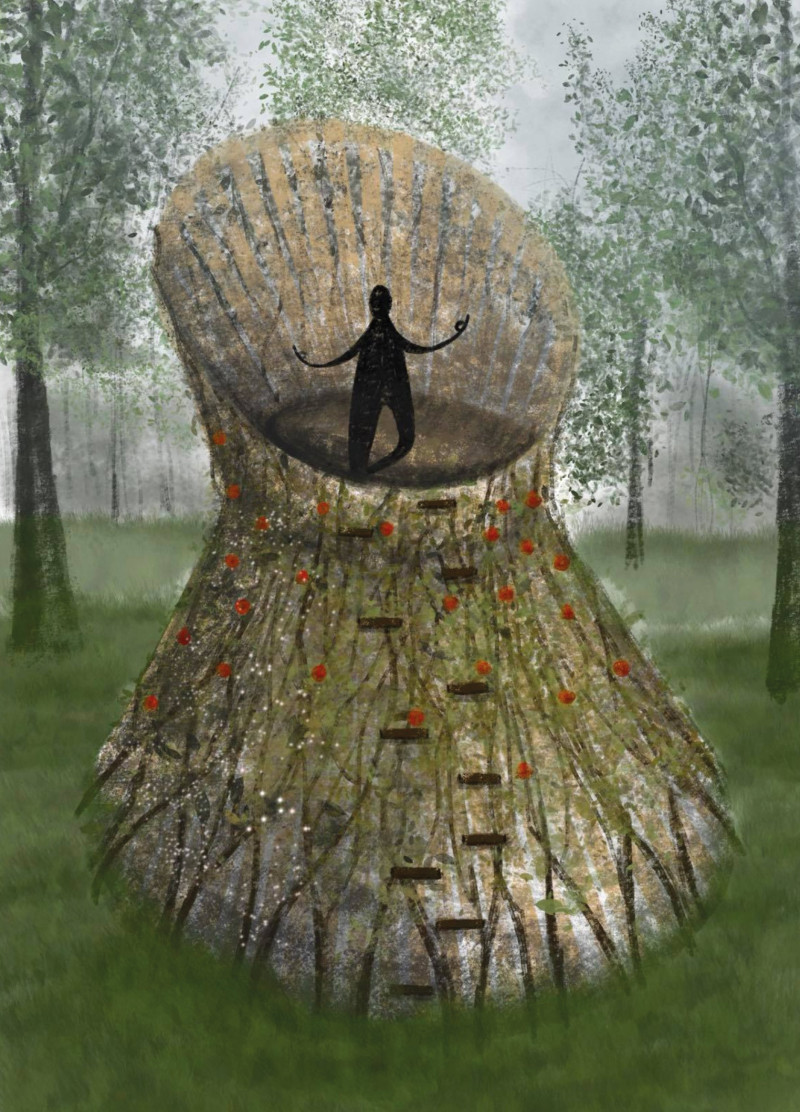5 key facts about this project
The Tiny Kiwi Meditation Cabin is a structure situated in a natural environment, designed to support meditation and self-reflection. It brings together two different atmospheres: a vibrant exterior that integrates with the nearby landscape and a calm interior space intended for focused mindfulness practice. This combination encourages individuals and groups to explore both their thoughts and feelings in a peaceful setting.
Spatial Organization
The interior of the cabin is divided into two main areas for meditation. The lower space serves as a place for group meditation, surrounded by walls that help block outside distractions. Natural light filters through small openings in the wooden panels, creating a soft and inviting atmosphere. This setup is ideal for collective sessions, allowing participants to connect with one another.
The upper area is designed for more experienced meditators. Accessing this zone involves a gentle slope, which serves as a metaphor for the personal growth journey. This design approach encourages individuals to engage with their surroundings, fostering a stronger connection between their practice and the environment.
Structural Elements
Wooden columns form the primary structure of the cabin, supporting the overall framework. These columns, along with three metal hoops, create the levels of the cabin. Logs are cut in half and positioned with their flat sides facing inward, providing a rustic look while linking the building to nature.
A central column functions as both an altar and a support for the upper floor. It features an opening that allows the creeper *Metrosideros fulgens* to grow upward through the structure. This integration of plant life not only beautifies the space but also enhances the experience of those meditating inside.
Entrance and Atmosphere
The entrance is discreet, hidden among natural elements, requiring visitors to bend slightly as they enter. This gesture conveys respect for the space. Inside, the layout can accommodate roughly 45 people, allowing each participant to face the entrance while feeling secure within their surroundings.
The cabin is positioned among existing trees, which contributes to its calming atmosphere. The thoughtful use of natural light along with the carefully designed spaces creates an environment where meditation can thrive, encouraging practitioners to immerse themselves fully in their experience.






















































